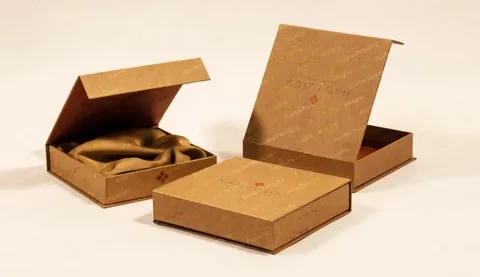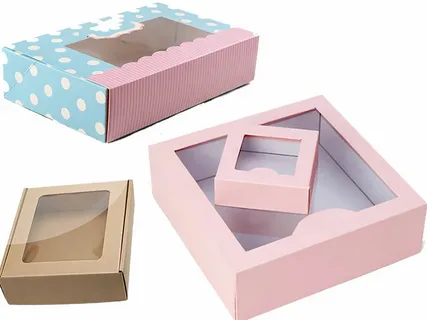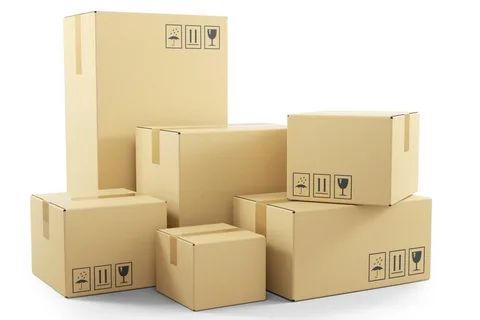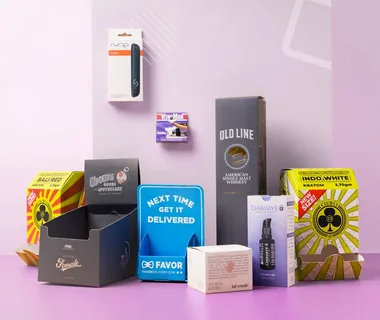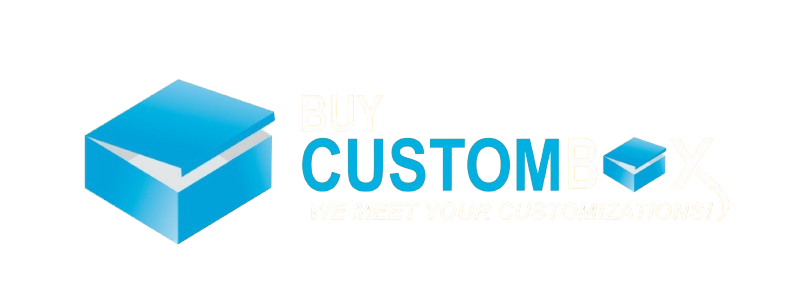In the rapidly evolving retail and e‑commerce world, packaging does more than just protect products—it shapes first impressions, conveys brand identity, and can significantly impact customer loyalty. When you’re searching for a Custom Retail Packaging Manufacturer, especially in Canada, finding one who offers high quality, timely delivery, and customization is crucial. This guide will walk you through everything: what to look for, why it matters, top companies, cost considerations, and tips for choosing the right partner.
Table of Contents
- What Does “Custom Retail Packaging Manufacturer” Mean?
- Why Custom Packaging Matters for Retail Brands
- Key Features of a High‑Quality Manufacturer
- Materials, Finishes, and Sustainability
- Top Custom Retail Packaging Manufacturer in Canada: Leading Companies
- How to Find a Local Manufacturer: “Near Me” Searches
- Cost Factors & Turnaround Time
- Tips for Working Effectively with Your Manufacturer
- Common Mistakes to Avoid
- Frequently Asked Questions
- Conclusion
What Does “Custom Retail Packaging Manufacturer” Mean?
A Custom Retail Packaging Manufacturer is a company that designs, produces, and supplies packaging solutions tailored to a retailer’s brand, product dimensions, visual identity, and functional requirements. Unlike generic or stock packaging, “custom” implies:
- Unique design or printing with logos, brand colors, graphics
- Size, shape, material, and internal protection adapted to the specific product(s)
- Optional finishing touches (foiling, embossing, coatings, custom inserts, etc.)
- Enhanced structural integrity to handle shipping, display, shelf use
This kind of packaging is often used for retail products (cosmetics, apparel, electronics, food & beverages, gifts, etc.) where presentation, branding, and protective performance are all important.
Why Custom Packaging Matters for Retail Brands
Custom packaging is not just about looking pretty. It has real business and operational advantages. Some significant benefits:
Brand Identity & First Impressions
Packaging is often the first physical touchpoint between a product and a customer. From logo placement to color choices and material feel, custom packaging builds recognition and trust. A well‑designed custom box or display packaging can communicate brand values (luxury, eco‑friendly, premium, fun, etc.).
Protection and Reduction of Damage
When packaging is designed specifically for your product’s shape, weight, fragility, and shipping conditions, it reduces damage in transit. That means fewer returns, fewer customer complaints, less cost in replacements.
Cost Efficiency Over Time
Even though custom packaging has upfront design and setup costs, it can lead to savings in shipping (right‑sized boxes reduce wasted space), in packaging material (less filler), and in branding return (better perceived value, repeat purchases). It may also help reduce damage‑related losses.
Market Differentiation
In crowded retail environments or in online marketplaces, packaging can be a differentiator. Unique designs, sustainable material options, tactile or finishing touches (e.g. matte/grainy textures, embossing, custom inserts) can help your products stand out.
Sustainability and Consumer Preferences
Consumers increasingly care about sustainability. Custom packaging manufacturers who offer recycled materials, FSC‑certified paperboard, biodegradable options, minimal packaging, or designs that reduce material use can help your brand meet environmental goals while appealing to eco‑conscious buyers.
Key Features of a High‑Quality Manufacturer
When evaluating Custom Retail Packaging Manufacturer in Canada, here are the features and capabilities to prioritize:
Design & Prototyping Support
Good manufacturers will help with design services (or at least support), provide dielines/templates, mockups, and sometimes sample runs. They understand structural design (boxes, inserts) and visual aesthetics.
Material Options & Finishing Techniques
Besides standard cardboard or corrugated options, premium finishes (e.g. foil stamping, spot UV, embossing, soft touch, gloss/matte lamination) allow differentiation. Also, ability to use eco‑friendly or recycled materials is increasingly important.
Capacity & Quality Control
Look for companies with strong manufacturing capacity, stable suppliers, good quality control systems, and relevant certifications (if needed, e.g. FSC, ISO, food‑safe materials, etc.). Consistency in output and reliability in deadlines are essential.
Cost Transparency and Minimum Order Quantities (MOQs)
Understand the cost structure: setup costs, printing plates or dies, shipping, finishing, and MOQs. Some manufacturers favor large orders; others are friendlier to smaller brands. Transparent quoting is crucial.
Turnaround Time & Logistics
Lead times for custom packaging include design, proofing, production, finishing, shipping. Be sure the manufacturer can meet your deadlines. Also verify shipping logistics, packaging of the packaging to avoid damage, etc.
Customer Support & Communication
A manufacturer who listens, gives clear estimates, responds fast, gives proofs, and helps problem‑solve is more valuable than one who just quotes a price. Especially for custom work, clear communication saves costly mistakes.
Materials, Finishes, and Sustainability
Since packaging is both visual and functional, the choice of materials and finishes has big impact.
Material Types
- Rigid board / chipboard – for premium boxes (e.g. jewelry, gift boxes)
- Paperboard / folding cartons – lighter, good for cosmetics, smaller products
- Corrugated board – for shipping boxes, heavier items, display units
- Kraft paper / recycled paper – for eco appeal, rustic aesthetic, sustainability
Finishing Options
- Printing methods: offset, digital, flexographic, screen printing
- Coatings: matte, gloss, soft touch, aqueous, UV coating
- Embellishments: foil stamping, embossing / debossing, spot UV, holographic foils
- Inserts or dividers: cardboard, foam, molded pulp
Sustainability Considerations
- Recycled content materials, FSC or SFI certification
- Minimal use of plastics; using biodegradable or compostable alternatives where possible
- Reducing packaging size and waste
- Designing for reuse or easy recycling
Top Custom Retail Packaging Manufacturer in Canada: Leading Companies
Here are some respected Custom Retail Packaging Manufacturer Canada options. This isn’t exhaustive, but includes major players and what they do well.
How to Find a Local Manufacturer: “Near Me” Searches
If you’re searching Custom Retail Packaging Manufacturer near me, here are steps to identify local options and assess them:
- Online Search & Directories
Use search engines with your city + keywords: “custom retail packaging manufacturer Toronto”, “custom boxes Vancouver”, etc. Also check business directories like Yellow Pages, ThomasNet Canada, etc. - Trade Shows & Packaging Expos
Packaging shows, local trade fairs bring together manufacturers and suppliers. Good for comparing quality and finishes in person. - Referrals & Samples
Ask other businesses in your sector who they use. Try to get physical samples from prospective manufacturers to check paper stock, printing quality, structure. - Visit Facilities (if feasible)
If local, tour the manufacturer’s facility to inspect machinery, materials, finishing capacities. Seeing production helps you judge whether they can deliver what you need. - Check Certifications and Reviews
Local manufacturers with quality or sustainability certifications or strong customer reviews are more reliable.
Cost Factors & Turnaround Time
Understanding cost and timing helps you plan better and avoid surprises.
Major Cost Components
| Component | What Affects Cost |
| Material & Paper Stock | Type (kraft, corrugated, rigid), thickness (gsm or board weight), recycled content, specialty textures |
| Printing & Artwork | Full‑color vs spot color, number of sides to print, complexity of design, color matching |
| Finishing | Embossing, foil, spot UV, matte/gloss lamination, inserts, windows |
| Size & Shape | Unusual shapes or non‑standard sizes may require custom dies or tools |
| Order Quantity | Higher volume usually lowers per‑unit cost but increases upfront cost |
| Shipping & Logistics | Distance, weight, packaging of packaging, tariffs (if importing materials) |
Turnaround Time Expectations
- Design and proofing: 1‑3 days (or more if revisions)
- Sample run: 3‑7 days (depends on complexity)
- Production: 7‑21 days (varies widely based on capacity, complexity, and finishes)
- Shipping/delivery: depends on distance; local manufacturers reduce delays
Be sure to factor all these phases when planning a product launch or seasonal inventory.
Tips for Working Effectively with Your Manufacturer
To get great results, collaboration and clear communication matter. Here are tips:
- Provide clear design files: correct resolution, dielines, color profiles
- Specify all your requirements up front: sizes, materials, finishes, internal protection (inserts, padding), shipping conditions
- Request proofs/mockups before full production
- Clarify packaging constraints: maximum weight, shelf display, environmental or regulatory standards
- Understand minimum order quantities (MOQ) and incremental cost for small batches
- Build in buffer time in your schedule for delays or revisions
Common Mistakes to Avoid
- Choosing cheapest quote without checking samples → You may sacrifice quality or get higher damage rates
- Overlooking shipping costs → Bulky or heavy packaging increases shipping & storage cost
- Ignoring finishing options or gloss/matte effects until too late in design → These impact branding heavily
- Not checking sustainability or regulatory compliance (especially for food, cosmetics)
- Failing to review mockups/design proofs properly
Frequently Asked Questions
Here are answers to common questions brands often have when looking for a Custom Retail Packaging Manufacturer.
1. What is a reasonable minimum order quantity (MOQ) for custom packaging in Canada?
It varies a lot. Some manufacturers allow smaller runs (hundreds), especially if finishing is minimal and standard materials are used. Others require thousands for specialty finishes. Always ask about MOQ early.
2. Can custom retail packaging be food‑safe or meet regulatory standards?
Yes. If you work in food, cosmetics, supplements, etc., you need packaging that meets regulations (e.g. contact safety, migration, sealing, coatings). Ensure your manufacturer uses food‑safe inks, materials, and properly certified facilities.
3. How much does custom retail packaging cost on average?
Again, it depends heavily: material type, printing, finishing, size, quantity. As a ballpark, small standard folding cartons might cost a few dollars each for small orders; premium rigid gift boxes or boxes with embossing/foil may cost substantially more. Always get a detailed quote.
4. What is the difference between stock packaging and custom packaging?
Stock packaging refers to pre‑made standard sizes and designs, minimal or no branding customization. Custom packaging is tailored: design, size, material, finishing, inserts etc. Stock is quicker and cheaper per unit for small stock, but custom offers branding and functional benefits.
5. How long does it take to receive custom packaging once everything is approved?
From proof approval to delivery, usually several weeks. Design/proof might take a few days; sample/manufacturing several more; shipping adds time. Local manufacturers typically faster than imports.
6. Are eco‑friendly materials more expensive?
Sometimes, but increasing competition and demand have made sustainable materials more accessible. Also, the cost difference often balances out when considering brand value, customer perception, and regulatory incentives. Factoring sustainability into design (e.g. reducing material volume) can offset cost.
Conclusion
Choosing the right Custom Retail Packaging Manufacturer can make a big difference in how customers perceive your brand, how well products arrive, and ultimately how much repeat business you generate. In Canada, there are many excellent options, ranging from boutique operations to large‑scale manufacturers. What matters most is matching your brand’s requirements—materials, finishes, sustainability, cost, and timing—with a manufacturer who communicates well, delivers consistently, and understands your vision.
If you’re looking for high quality, reliability, and brand‑enhancing designs, working with a trusted company such as buycustombox can streamline the process—from design to delivery—and help your packaging reflect the value of what’s inside. Partner wisely, invest in good packaging, and your customers will notice the difference.



